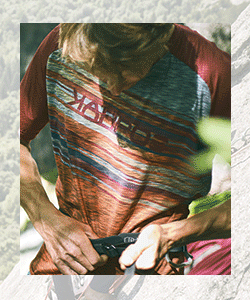Here Are some Pro-Tips That Will Break Through Your Plateau

Climbing is addictive. One reason is that you can see massive strength gains and technique improvement from day one of your climbing career. But after a few months—or for the extremely lucky, a few years—a plateau can sneak up on you, slow your progress, and frustrate you beyond belief.
Tired of Stagnation? Here Are some Pro-Tips That Will Break Through Your Plateau
Strength Training
Most climbers hate to spend training time off of the wall. But adding one or two specific exercises, including hangboard workouts, after your climbing session can produce major results. If you’re short, wide-grip lat pull-downs at maximum weight can give you extra reach and improve lockoff strength.

Find a lat pull-down machine (most gyms have them), and widen your grip as far as possible—wider than your shoulders. Experiment with weight until you’re failing on your third rep. Then do three to five sets of two reps (failing on your third) at that weight with five minutes of rest between sets.
Do these after a climbing session or on an off-climbing day. Don’t do them before your session because you’ll be tired on the wall and won’t maximize your climbing time. Start with three times a week, moving up in weight as you get stronger. You can do more sessions in a week, but if you find yourself too tired to climb hard during your session, scale back to three.
Carlo Traversi:“I doubled the number of V13s I had climbed and did a few V14s when I incorporated max-weight, wide-grip lat pull-downs into my training regimen four to five times a week. My personal record was 260 pounds, which was almost twice my weight. As a short climber, I often need to be able to lockoff incredibly wide, and lat pull-downs were my solution.”
Weaknesses
It’s easy to have fun by focusing on what you’re good at. It’s much more difficult to face the fact that you’re not good at certain things, and then go out and turn them into strengths. Below are some common issues we found among the pros when it came to weaknesses.
Bad Footholds. Seek out the worst possible footholds in the gym and practice using them in a variety of ways, moving in all directions. Do the same outside and find problems that are known for glassy, microscopic, terrible feet.
Small Hands, Big Holds. Women tend to be good at crimping the tiniest nubs, but when it comes to large slopers and pinches, the ladies more often struggle. The only way to become proficient with these sizeable holds is by using them. Slopers require patience, balance, core tension, and very subtle movement; every limb must be engaged. You don’t just grab slopers, you use the rest of your body to position yourself in a way that makes them useable. A general rule of thumb is to stay as far below slopers as possible so that you are pulling down rather than out.
Power : a good manner to break plateau
Power. No matter how many laps you can run on techy moderates, you will inevitably plateau at a more difficult grade if you don’t have power. Try circuits on hard boulder problems instead of just climbing around randomly. The campus board and systems board are also especially useful. Consider adding a few sets of simple box jumps (repeatedly jump on an 18” to 24” sturdy box) after climbing sessions. It will give you the explosive leg power and muscle memory you need for big moves
Jonathan Siegrist:“I could run lap after lap on sport routes just below my max ability. But power always eluded me. My training volume has gone down. But my training intensity has gone up. I do limit bouldering, so short, hard problems [that have one or two crux moves at your limit]. And campusing, which is really important. I do one to three campus board sessions per week that last two hours each.”
Failure and Redpointing : how to break the plateau
When climbing at a world-class level, professionals are constantly faced with failure. Each pro climber has had to develop his or her own positive attitude, along with mental coping mechanisms. Studies that focus on the psychological aspect of sports show that the best athletes are those who can successfully “lie” to themselves, meaning they can internally say, “Yeah, I can do that.
Doesn’t matter that I sucked just now—I can totally do this. No problem.” Even if something is beyond your current ability or strength level, it’s best to approach it with blind optimism and confidence (within reason, of course). Carlo Traversi has a refreshingly positive and simple outlook, saying, “There are so many failures in climbing. I try not to dwell on them. I climb because it’s fun.”
Do a strength- and power-focused training cycle to get stronger
All of these pros have spent months—sometimes years—on particular projects. This means returning to the same crag over and over with an upbeat attitude and a desire to go back for more. With any luck on a project, you’ll be falling off higher and higher up. But if you aren’t, you should get back in the gym and do a strength- and power-focused training cycle to get stronger. Sometimes it’s best to step away from the rock. Even if it means not getting the send that season.
Emily Harrington:“After a few months in the big mountains, I returned to sport climbing, and it was demoralizing to start all over. My secret was finishing every day by giving it everything I had, even when it bruised my ego. I would fall on climbs that were warm-ups. I reminded myself why I do this sport and what makes me love it so much. All you have to do is put in the time and effort. In the end, it’s all about wanting it.”
This article about plateau first appeared in Climbing in 2014.










